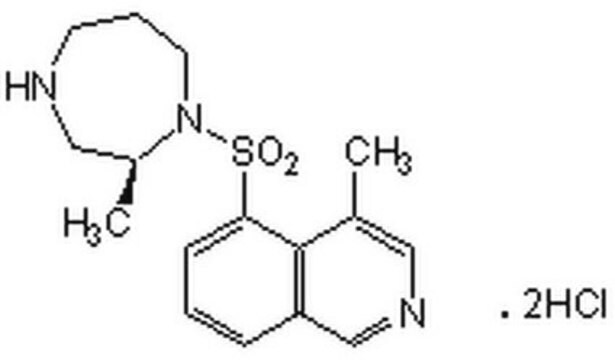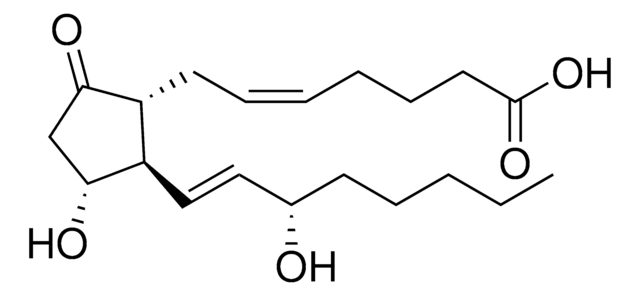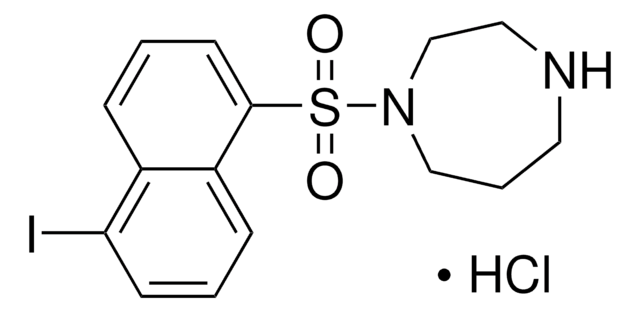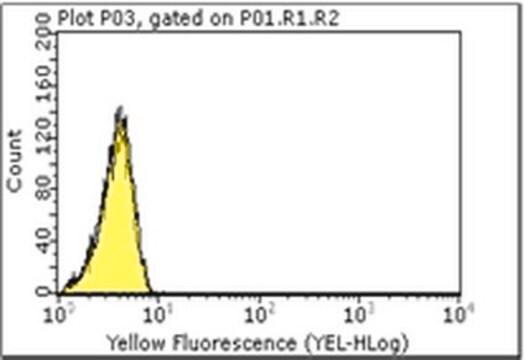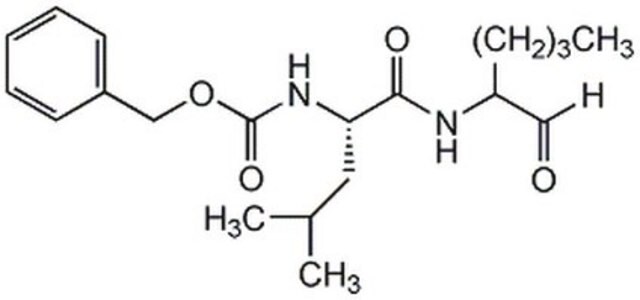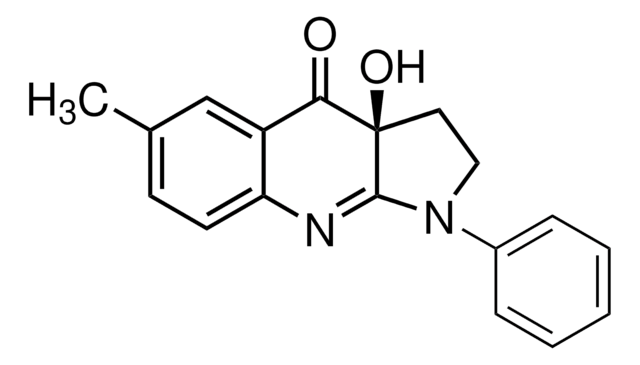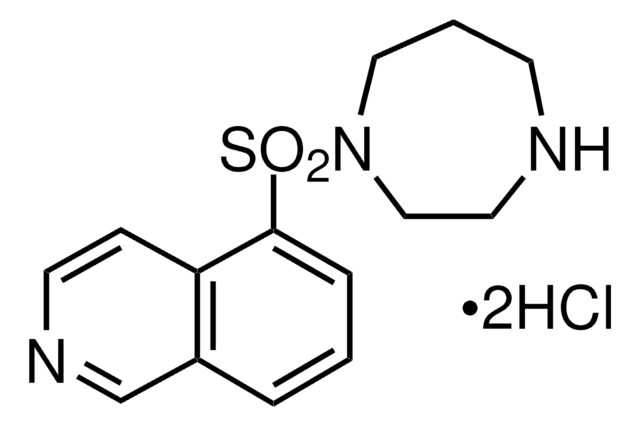688000
Y-27632
≥95% (HPLC), solid, Rho kinase inhibitor, Calbiochem
Synonym(s):
Y-27632, (R)-(+)-trans-N-(4-Pyridyl)-4-(1-aminoethyl)-cyclohexanecarboxamide, 2HCl, ROCK Inhibitor, Rho Kinase Inhibitor VI, ROCK Inhibitor, (R)-(+)-trans-N-(4-Pyridyl)-4-(1-aminoethyl)-cyclohexanecarboxamide, 2HCl, Rho Kinase Inhibitor VI
About This Item
Recommended Products
Product Name
Y-27632-CAS 331752-47-7-Calbiochem, Y-27632A, CAS 331752-47-7, is a cell-permeable, reversible, inhibitor of Rho kinases (Ki = 140 nM for p160ROCK). Enhances survival & cloning efficiency of ESC without affecting their pluripotency.
Quality Level
Assay
≥95% (HPLC)
form
solid
manufacturer/tradename
Calbiochem®
storage condition
OK to freeze
desiccated (hygroscopic)
protect from light
color
white
solubility
water: 100 mg/mL
shipped in
ambient
storage temp.
−20°C
SMILES string
N[C@@H](C1CCC(CC1)C(=O)Nc2ccncc2)C
InChI
1S/C14H21N3O/c1-10(15)11-2-4-12(5-3-11)14(18)17-13-6-8-16-9-7-13/h6-12H,2-5,15H2,1H3,(H,16,17,18)/t10-,11?,12?/m1/s1
InChI key
IYOZTVGMEWJPKR-VOMCLLRMSA-N
General description
Biochem/physiol Actions
p160 Rho-associated protein kinases (ROCK)
Packaging
Warning
Reconstitution
Other Notes
Watanabe, K., et al. 2007. Nature Biotech.25, 681.
Chitaley, K., et al. 2001. Nat. Med.7, 119.
Davies, S.P., et al. 2000. Biochem. J. 351, 95.
Narumiya, S., et al. 2000. Methods Enzymol.325, 273.
Hirose, M., et al. 1998. J. Cell Biol.141, 1625.
Maekawa, M., et al. 1999. Science285, 895.
Uehata, M., et al. 1997. Nature389, 990.
Legal Information
Storage Class Code
11 - Combustible Solids
WGK
WGK 3
Flash Point(F)
Not applicable
Flash Point(C)
Not applicable
Certificates of Analysis (COA)
Search for Certificates of Analysis (COA) by entering the products Lot/Batch Number. Lot and Batch Numbers can be found on a product’s label following the words ‘Lot’ or ‘Batch’.
Already Own This Product?
Find documentation for the products that you have recently purchased in the Document Library.
Customers Also Viewed
Our team of scientists has experience in all areas of research including Life Science, Material Science, Chemical Synthesis, Chromatography, Analytical and many others.
Contact Technical Service



